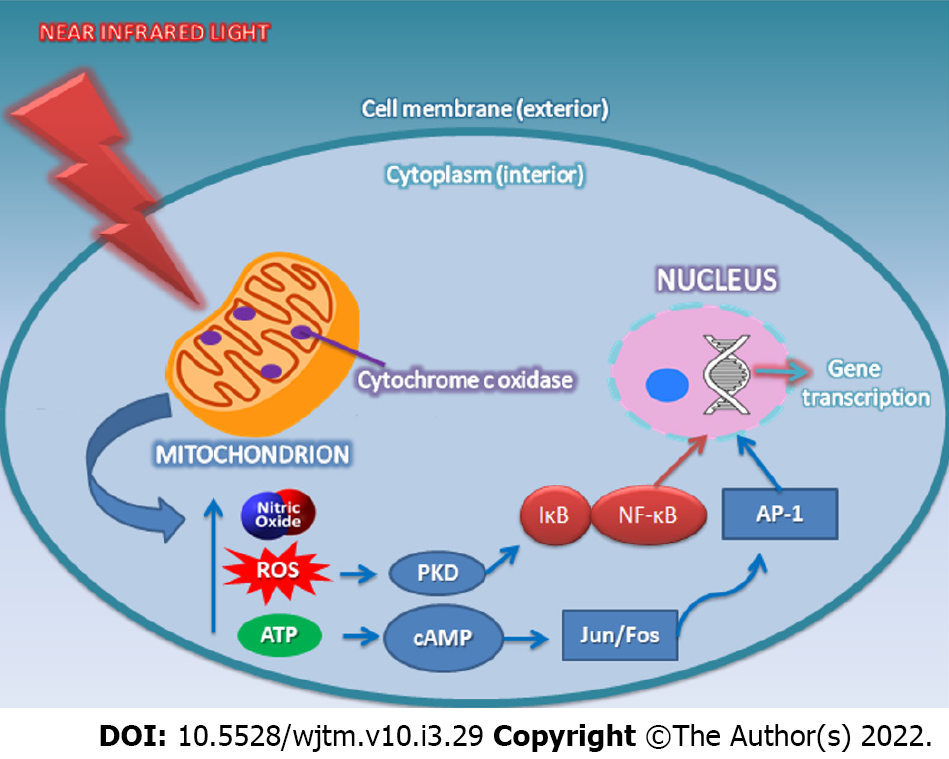The 9-Minute Rule for Photobiomodulation
Wiki Article
Excitement About Photobiomodulation
Table of ContentsThe Best Strategy To Use For PhotobiomodulationAll About PhotobiomodulationFacts About Photobiomodulation RevealedEverything about Photobiomodulation
Laser treatment is a medical therapy that uses concentrated light to promote a process called. During PBM, photons go into the cells and communicate with the cytochrome c facility within mitochondria. This communication activates a biological waterfall of occasions that results in an increase in mobile metabolic process, which can along with accelerate the recovery procedure.There is agreement that the application of a therapeutic dose of light to impaired or inefficient cells brings about a cellular reaction moderated by mitochondrial mechanisms. Photobiomodulation. Research studies have actually shown that these changes can affect discomfort and swelling, as well as, tissue fixing
Adjustments in ATP, responsive oxygen species and nitric oxide adhere to light absorption by Cc, O. These results are redox state and dosage reliant.

Photobiomodulation Can Be Fun For Anyone
PBM gadgets have actually been cleared for advertising and marketing by FDA via the Premarket Notification/510( k) process as adjunctive devices for the temporary alleviation of discomfort. These clearances were based upon the presentation of medical information to sustain such cases (Photobiomodulation). In this therapy, a light source is positioned near or touching the skin, allowing the light power (photons) to permeate cells where it engages with chromophores situated in cells leading to photophysical and photochemical modifications that result in alterations at the molecular, mobile and cells degrees of the bodyInterestingly, recent study shows that light can improve efficiency in normal cells and cells. The possible applications of PBMT are countless and are being checked out experimentally at the standard scientific research, pre-clinical and professional level. The existing clinical uses are for the relief of discomfort and inflammation and the treatment of sports injuries.

The therapy parameters and number of sessions needed for PBMT are dependent upon place and cause. PBMT typically calls for even more than one therapy for optimum pain alleviation.
Some Ideas on Photobiomodulation You Need To Know
Therapy specifications for PBMT were initially established utilizing cells artificial insemination and in small animal designs. These therapy specifications generally had a low irradiance and fluence and worked well for cutaneous applications. Nonetheless when clinicians started to use PBMT to treat frameworks that were situated deeper in the body, they made use of these specifications with adverse outcomes.
We now recognize that these unfavorable researches were due to inaccurate tool and treatment parameters for transcutaneous treatment of much deeper frameworks. Current advances in laser therapy tools and even more research study into the ideal does have significantly enhanced the results of PBMT. For dealing with deep cells, the wavelength of light used identifies the depth of penetration into a cells.
As a result, it is necessary that a clinician uses the ideal wavelength of light and specifications to deal with a condition. One wavelength and one set of treatment specifications will not be efficient for all conditions. Adverse side results have actually not been reported from the usage of PBMT (Photobiomodulation). Upgraded June 27, 2016Juanita j
Light therapy is a non-invasive therapy that functions by increasing the capability of the cell to produce power (ATP) to heal the location being dealt with. As a result, it can reduce inflammation, swelling, and discomfort in the area. Research study in this field is increasing, with more comprehensive research documents linked listed below for those who would love to discover more.
Some Ideas on Photobiomodulation You Should Know
In the very first experiment, Dr. Endre Mester, used shaved rats and observing just how the laser affected their capability to expand hair learn this here now compared to the team that was not getting LLLT. He found that the group of mice receiving LLLT had the ability to grow their hair back quicker than the team of computer mice that didn't get LLLT (Hoon C, et alia; 2012).This therapy is described in this manner to distinguish the distinction between the lasers some professions use to reduce (eg. in surgical treatments, or dental treatments). Low-level light therapy is pain-free, non-invasive treatment. It is made use of to reduce inflammation, swelling, and persistent joint conditions, reduce pain and accelerate injury healing of nerves and tissues (Hoon C, et alia; 2012).
LLLT has a biphasic response, implying navigate to these guys that lower find more info dosages are normally seen to be a lot more helpful than greater dosages. That being claimed, doses higher or reduced than the optimum dose does not impact (Hoon C, et al; 2012). Therefore, it can be tough to have studies on LLLT with many criteria.
Some business incorporated both (LED and laser) to provide a much more all-round treatment since lasers can permeate much deeper than LED and infrared light (Norman Doidge, The Mind's Way of Healing, 2015). Throughout treatment, the area that is being treated is exposed to LED light from a Bio, Flex Laser, which goes to 660 nm wavelength, complied with by infrared light at 830-840 nm wavelength.
Report this wiki page